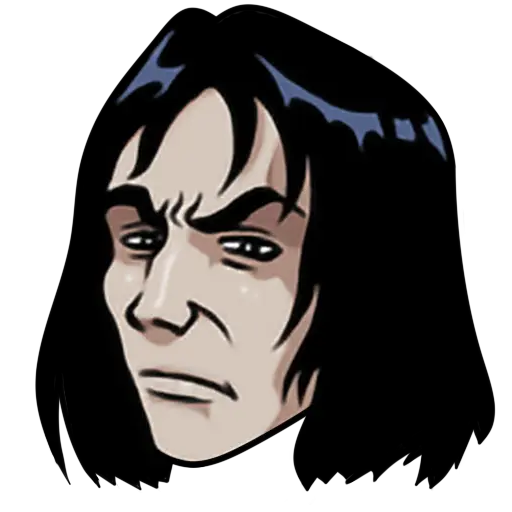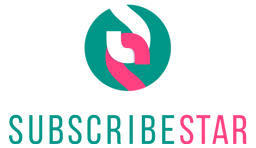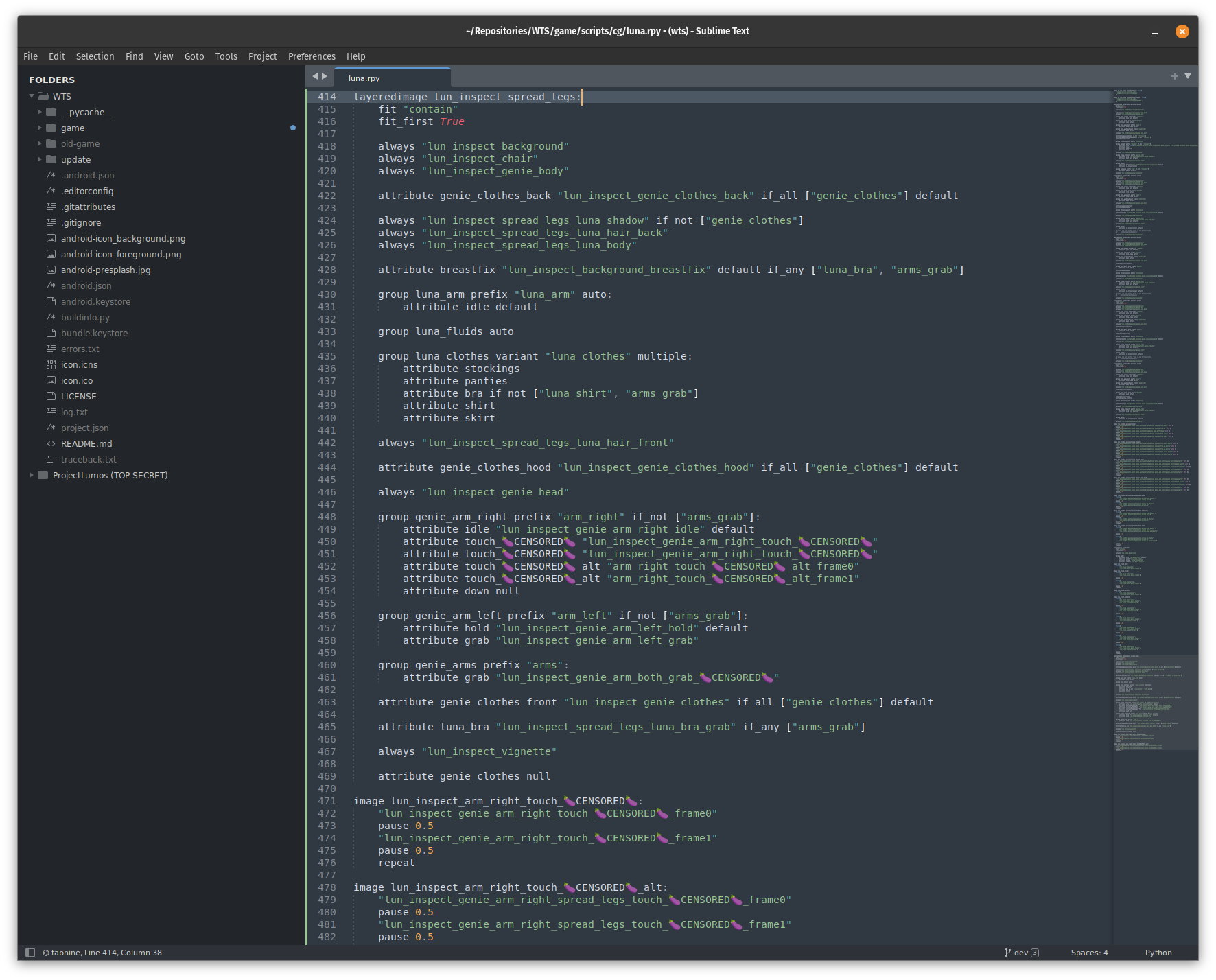
Heya, Johnny here with another devblog.
First thing’s first, I’d like to take a moment to thank you guys for your feedback on my previous devblog. I don’t often have the opportunity to write something in a different style than what I’m used to so I appreciate the kind words about the Quibbler idea and article. Since you guys enjoyed it, I’ll include another one at the end of this devblog. Now, let’s move on to the main topic.
I’m currently working on Tonks content. The writing is progressing well, and I’ve finished writing the majority of the event which Loafy showed an art preview for previously. This event involves Genie and Tonks having a good time inside a broom closet of all places. I wonder who might be responsible for getting them into such a predicament. Right now, I’m focusing on writing the lead-up to this scenario, which is filled with the light hearted humour you’d expect.
In other news, while brainstorming, I’ve also finished implementing kinetic text into the game, as well as the new Genie “self-love” options that I mentioned previously. Since then, I’ve added a few more random dialogues based on your suggestions.
Moving on to the Quibbler article. This one is a bit of a weird one (as if the previous one wasn’t). I hope you guys enjoy it.
Wanksy: Is he real?
“Wanksy” has infiltrated the cultural lexicon. An anonymous street artist, known for spreading their explicit artwork across the wizarding world.
Who is this enigmatic artist known as “Wanksy”? In this article, we uncover the truth behind the provocative pseudonym and their journey to fame.
It is believed that Wanksy’s rise to fame came as a result of a political smear campaign. By featuring caricatures of politicians with outrageous physical additions, their intention was to displays their disapproval of their politics.
One popular theory is that the true identity of Wanksy is either that of a goblin, or an independent contractor employed by Gringotts bank. Political campaigning occurring at the time of their rise to fame brought questions to light, focusing on how the bank is essentially a monopoly. Certain politicians even going as far as suggesting the idea of seizing control of the bank from the goblins and placing it within the ministry of magic’s control.
Another popular theory is that Wanksy is simply a rogue poltergeist. This theory is strengthened by the fact that the appearance of these artistic creations have been limited to a smaller area within Diagon Alley. That said, many have refuted this theory, as poltergeists are known for utilising a wider and more chaotic range of methods to cause disruption.
Regardless of their identity, their work has become increasingly popular amongst both witches and wizards, attracting a diverse following from across the globe. The owner of Scribbulus Writing Implements, who wishes to remain anonymous, shares that the appearance of a scandalous piece of artwork outside their shop has resulted in a remarkable uptick in sales. One Frenchman who passed by during our interview enthusiastically pointed towards Wanksy’s creation, exclaiming “Une si petite bite”. Another passer-by, who we asked about their opinion on the piece, smiled and said that “there’s nothing like a good wank”.
Other artists have also been springing up within the scene, attempting to copy Wanksy’s unique style. However, these imitations are often easy to distinguish from a true Wanksy once you know what to look for. One of the more common tells is the amount of extremities. Imitations more often than not end up with a more realistic number of hands and fingers compared to what you’d see in a Wanksy original.
As much as I’d prefer to focus solely on the positives, I’m obliged to mention that we’ve been seeing less of Wanksy the last couple of years. The politically inclined suggest Wanksy losing their artistic motivation due to the perceived ineffectiveness of their political statements. Artists, however, suggest the possibility of “carpal tunnel” or the more commonly known term within the artist industry, “wanker’s cramp”. Another frequent Quibbler correspondent and adept seer, Sybill Trelawney, hypothesises that the decrease in Wanksy sightings is due to the artist preparing for a major event that will soon unfold.
No matter their reason for pulling back from the limelight, we hope that our article can reach Wanksy to let them know we are all looking forward to seeing what they’ve got in store for us next.”
If you have any ideas for Quibbler headlines or topics to cover, please feel free to suggest them in the Discord server’s suggestions channel or in the comments below. I’ll be sure to take your input into consideration once I find a spell to conjure up some time to write another article. Apart from the finished article, here are some potential headlines that I’ve put down so far: “The Top 10 Most Useless Wizarding Spells” and “Magical Creatures with the Most Unfortunate Names”.
That’s it for today’s devblog, thank you for reading.
—Johnny











